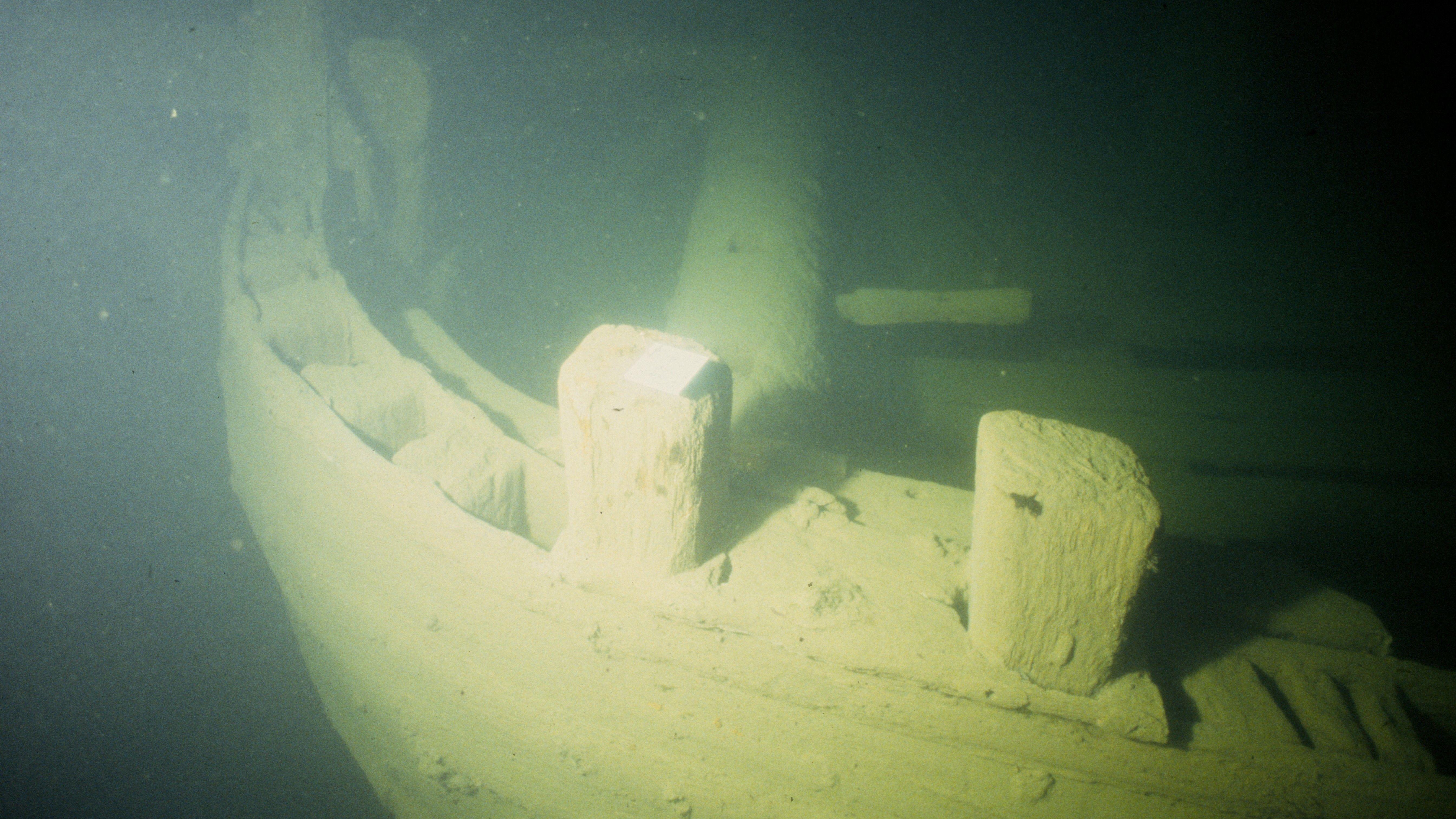
Vrouw Maria
The site is located in the waters of Trunsjö Village in the city of Pargas (Parainen), within the restricted area of the Archipelago Sea National Park's Natura zone. Landing, movement, and scuba diving are prohibited throughout the year without permission from Metsähallitus (Finnish Forest Administration). The wreck has a protected area designated under the Antiquities Act, centered on the island of Namnlösan. Diving and anchoring within the protected area are prohibited without permission from the Finnish Heritage Agency. The diameter of the protected area is 1500 meters, and it is marked on nautical charts. The wreck is situated southeast of Namnlösan island. The water area is managed by Metsähallitus.
The wreck is located in a small depression surrounded by rocky islets, with a depth of approximately 40 meters. The wreck has settled on its keel, and most of its hull is still visible. The hull is very well-preserved, and the lower parts of the two masts are still standing. It measures about 26 meters in length and seven meters in width. The upper parts of the three-part masts have fallen on the starboard side of the wreck. There are detached structural elements and rigging pieces on the deck. The bowsprit has fallen to the seabed next to the bow structure. The interior of the wreck reveals cargo hold, stern cabin, and galley.
The wreck is that of a Dutch sailboat named Vrouw Maria, and it holds significant cultural-historical value. In October 1771, Vrouw Maria was en route from Amsterdam to St. Petersburg when it ran aground and sank in a storm, despite rescue efforts, between the nights of October 8 and 9. Most of the ship's cargo, including paintings destined for Empress Catherine the Great, was lost with the vessel. The remaining cargo consisted mainly of typical trade goods of that time, such as foodstuffs, fabrics, and dyes. The entire crew of Vrouw Maria survived the shipwreck. Before the ship sank, the crew managed to save some of the cargo with the help of the local islanders, which was later auctioned in Turku.
Vrouw Maria wreck was investigated in the early 2000s as part of the international MoSS research project, funded by the EU. The wreck was also studied in the Vrouw Maria Underwater project funded by the Ministry of Education and Culture between 2009 and 2012.